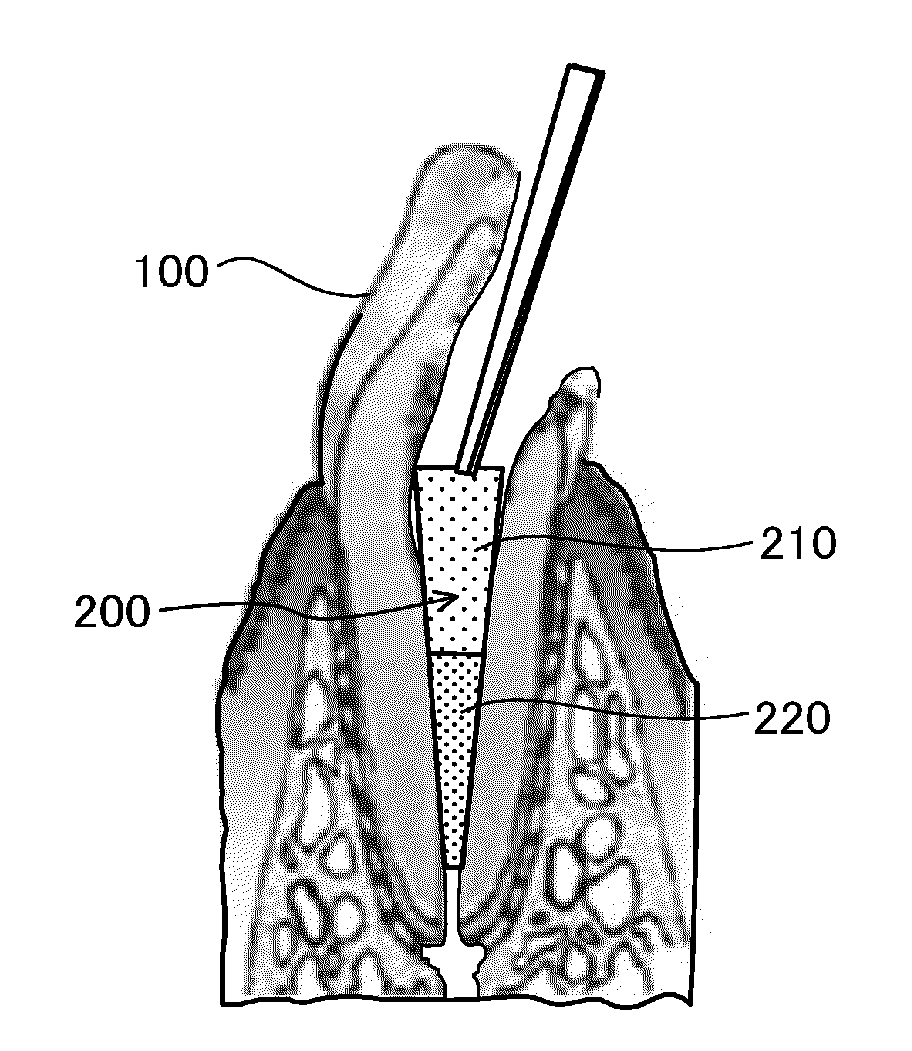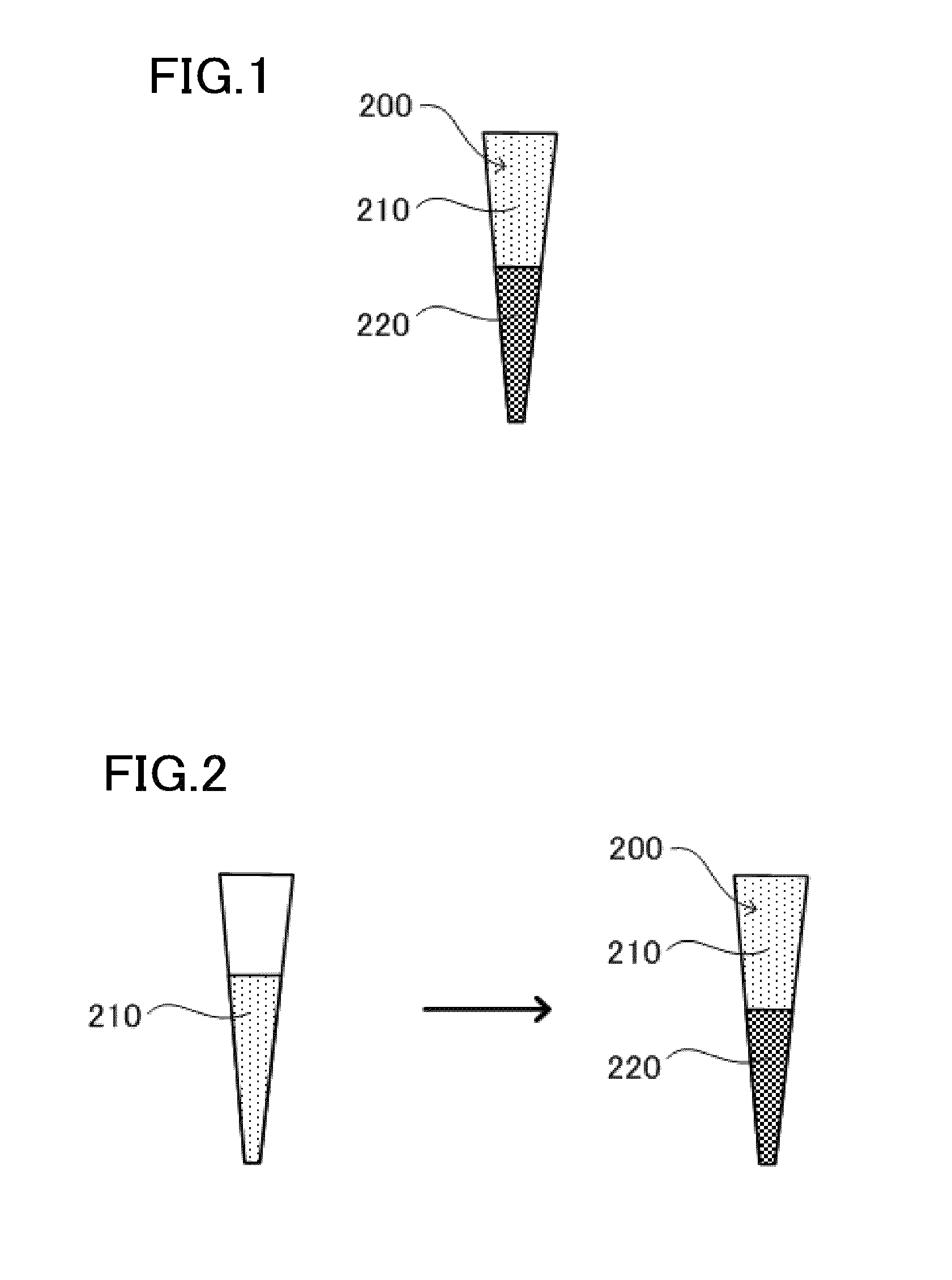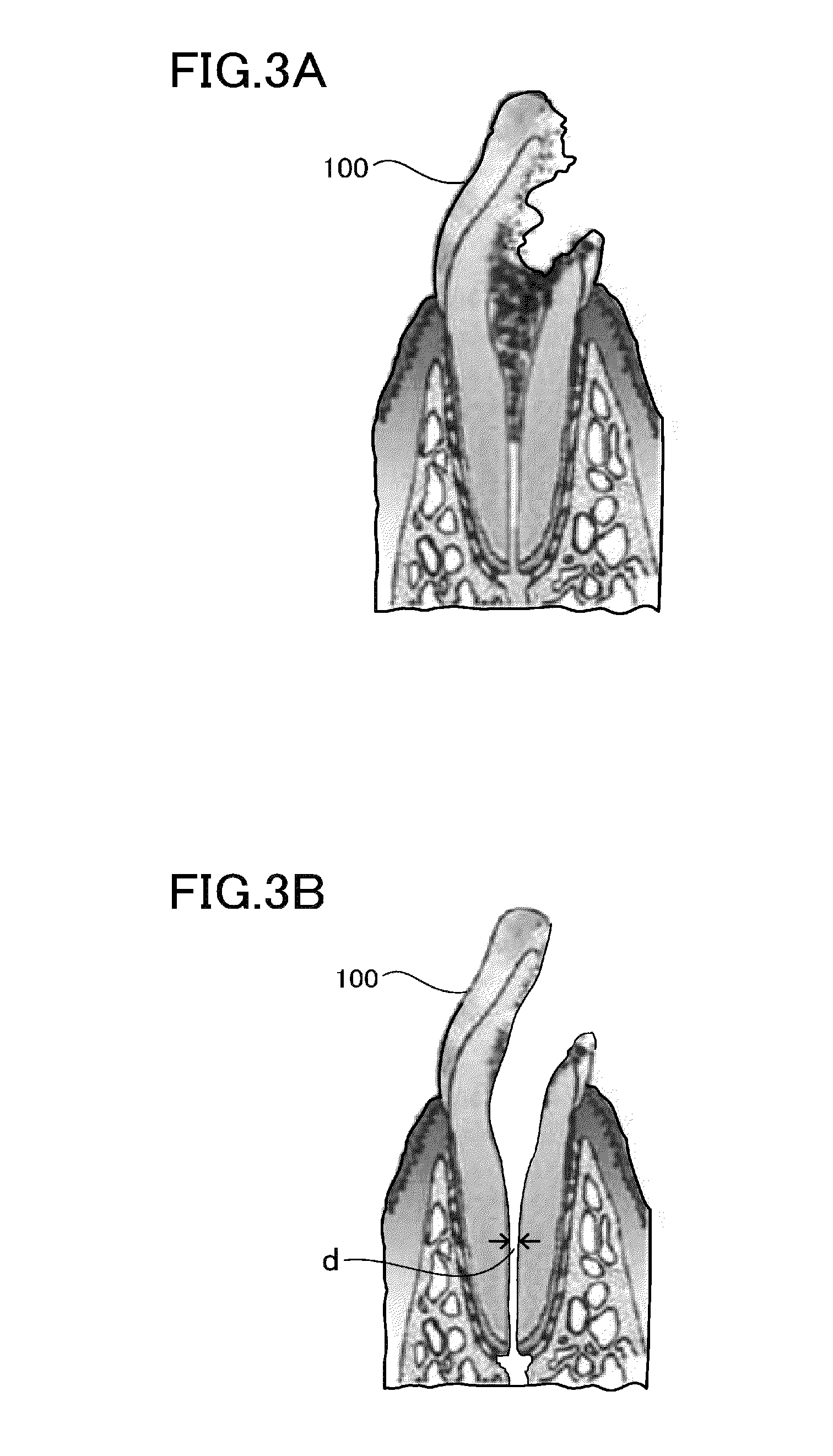Unextracted tooth root canal filler and dental tissue regeneration method for unextracted tooth
a technology of unextracted tooth and root canal filler, which is applied in the direction of skeletal/connective tissue cells, teeth capping, prosthesis, etc., can solve the problems of increasing the risk of enlarged dental caries, requiring drastic improvement of dental caries treatment, and greatly increasing the possibility of tooth loss
- Summary
- Abstract
- Description
- Claims
- Application Information
AI Technical Summary
Benefits of technology
Problems solved by technology
Method used
Image
Examples
first embodiment
[0124]Embodiments of the present disclosure will be specifically described hereinafter with reference to the drawings. An unextracted tooth root canal filler according to this embodiment includes dental pulp stem cells and an extracellular matrix, and is inserted in the apical part of an infected root canal of an unextracted tooth after pulpectomy or enlargement and cleaning of the root canal.
[0125]FIG. 1 is a view illustrating an unextracted tooth root canal filler 200 according to this embodiment. The unextracted tooth root canal filler 200 is formed by transplanting dental pulp stem cells 220 to an extracellular matrix 210. The dental pulp stem cells 220 are transplanted to the apical part of the root canal of the unextracted tooth root canal filler 200.
[0126]The dental pulp stem cells are dental pulp stem cells derived from a permanent tooth or a deciduous tooth. The dental pulp stem cells include at least one of dental pulp CXCR4-positive cells, SSEA-4-positive cells, FLK-1-pos...
second embodiment
[0148]FIGS. 4A and 4B are views illustrating an unextracted tooth root canal filler 200 according to a second embodiment of the present disclosure. As illustrated in FIG. 4A, in the unextracted tooth root canal filler 200, dental pulp stem cells 220 are transplanted to the apical part of the root canal, and a chemotactic factor 230 containing at least one of a cell chemotactic factor, a cell growth factor, a neurotrophic factor, or an angiogenic factor is transplanted to the tooth crown part of the root canal (e.g., ½ to ⅔ from the upper end of the root canal).
[0149]The reason why the dental pulp stem cells 220 are transplanted to the apical part of the root canal and the chemotactic factor 230 is transplanted to the tooth crown part of the root canal is as follows. Even after the dental pulp stem cells 220 are transplanted to the tooth crown part of the root canal, failures in supplying nutrition from tissues might occur to cause a necrosis. In addition, the dental pulp stem cells ...
third embodiment
[0160]In the unextracted tooth root canal filler 200 of the first embodiment, the dental pulp stem cells 220 are transplanted to the apical part of the root canal. However, the present disclosure is not limited to this example, and the dental pulp stem cells 220 may be uniformly mixed in the entire unextracted tooth root canal filler 200. In such an unextracted tooth root canal filler 200, dental tissues can be regenerated in a tooth with a complete apical closure, without internal resorption, external resorption and odontoclast differentiation in the regenerated tissues, and odontoblasts are aligned along the dentinal wall.
[0161]This unextracted tooth root canal filler 200 can be obtained by, for example, uniformly mixing dental pulp stem cells with a type I and III collagen mixture (e.g., collagen XYZ, Nitta Gelatin) without formation of bubbles.
[0162]In the unextracted tooth root canal filler 200 of the second embodiment described above, the dental pulp stem cells 220 are transpl...
PUM
| Property | Measurement | Unit |
|---|---|---|
| Fraction | aaaaa | aaaaa |
| Fraction | aaaaa | aaaaa |
| Fraction | aaaaa | aaaaa |
Abstract
Description
Claims
Application Information
 Login to View More
Login to View More - R&D
- Intellectual Property
- Life Sciences
- Materials
- Tech Scout
- Unparalleled Data Quality
- Higher Quality Content
- 60% Fewer Hallucinations
Browse by: Latest US Patents, China's latest patents, Technical Efficacy Thesaurus, Application Domain, Technology Topic, Popular Technical Reports.
© 2025 PatSnap. All rights reserved.Legal|Privacy policy|Modern Slavery Act Transparency Statement|Sitemap|About US| Contact US: help@patsnap.com



